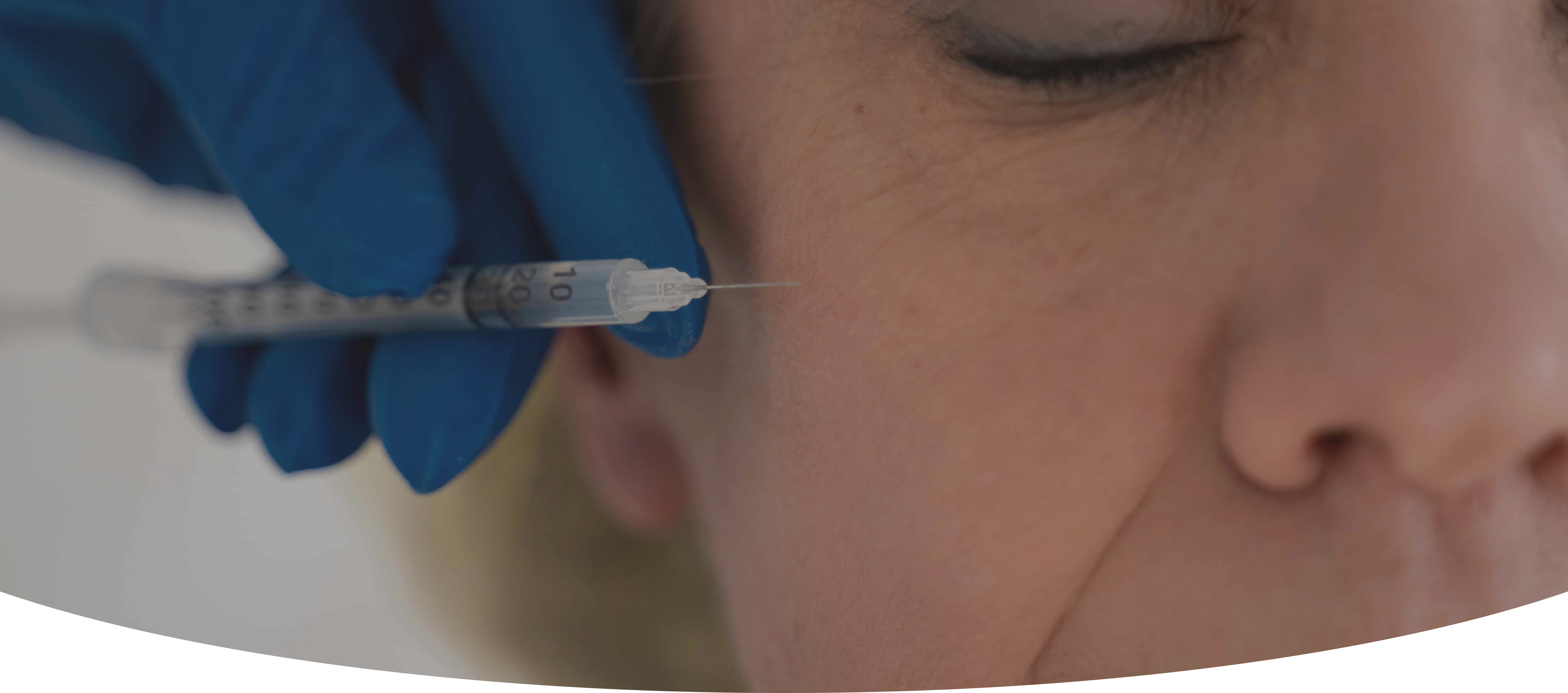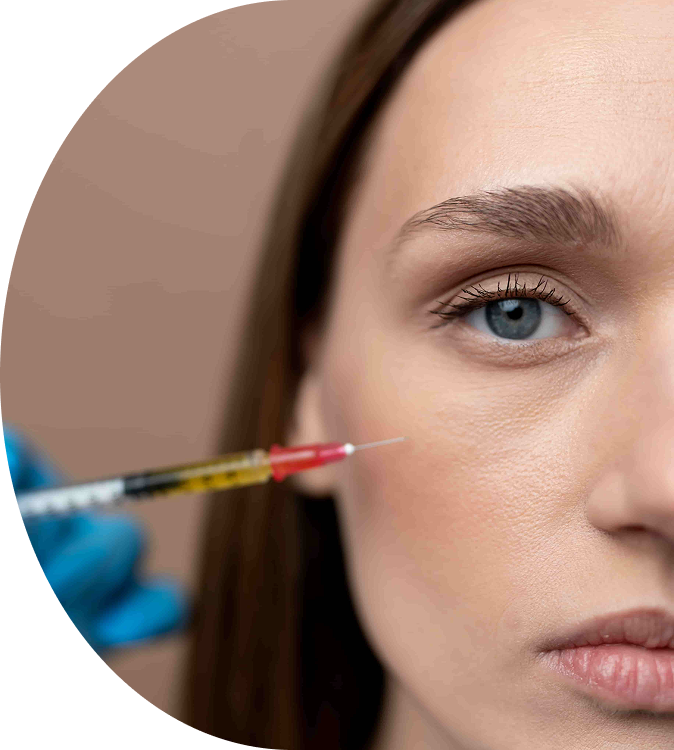Platelet-rich plasma or hyaluronic acid injections: which is right for you?
Which is right for you?
When it comes to improving skin quality, there are several options open to you. Two treatments frequently offered in medical aesthetic clinics are platelet-rich plasma (PRP) injections and hyaluronic acid injections. But how do you choose which is best for you?
Treatment goals
Platelet-rich plasma stimulates cell regeneration and collagen production, while hyaluronic acid deeply hydrates the skin and restores volume. These two solutions have complementary effects, but target different needs.
Session duration and frequency
PRP injections are generally administered as a course of treatment (3 to 4 sessions spaced one month apart), while hyaluronic acid can produce an immediate and lasting effect between 6 and 18 months, depending on the area treated and the type of product used.
%203%20(3).svg)
How does platelet-rich plasma work?
PRP is a platelet concentrate extracted from the patient's own blood. After a blood test, a centrifugation process isolates the growth factor-rich plasma. Injected into the dermis, this concentrate promotes healing, stimulates collagen production and improves overall skin texture. This natural treatment is particularly popular for facial rejuvenation, treating hair loss and dull, tired skin.
Platelet-rich plasma injections do not alter facial volumes, but aim to optimize skin quality in a progressive manner. It is a safe, biocompatible treatment, well suited to patients seeking a regenerative approach without the addition of synthetic products.
%202%20(1).svg)
Hyaluronic acid: hydration and volume
A substance naturally present in the skin, hyaluronic acid acts like a veritable water sponge. When injected, it intensely hydrates tissues, fills in wrinkles and restores facial volume, particularly around the lips, nasolabial folds, dark circles and cheekbones.
What are the benefits of hyaluronic acid for the skin? They include improved elasticity, deep hydration and visible improvement of hollowed or marked areas. In this sense, hyaluronic acid is often preferred in cases where we wish to redefine facial contours or correct certain signs of aging.
What's more, is hyaluronic acid good for the skin? Yes, because of its plumping and protective effect against external aggressions. And is hyaluronic acid effective against acne? - It can improve post-acne skin by attenuating atrophic scars, but does not replace targeted medical treatment for active acne.
Platelet-rich plasma vs hyaluronic acid: how to choose?
The choice between these two approaches depends primarily on your objectives.
If you want to improve the texture and overall quality of your skin, or slow down the effects of skin aging, platelet-rich plasma is a natural, regenerative option.
If you're looking to fill in wrinkles, restructure facial volumes or correct asymmetries, hyaluronic acid injections are the best choice.
In some cases, professionals may recommend a combination of both treatments for a harmonious result. A personalized treatment plan will align the strategy with your skin's precise needs.
FAQ on
Rich Plasma vs. Hyaluronic Acid Injections
What is platelet-rich plasma and who is it intended for?
Platelet-rich plasma (PRP) is an autologous substance extracted from the patient's own blood, rich in growth factors. It is obtained by centrifugation, which separates the platelets from the rest of the blood components. Injected into the dermis, PRP stimulates tissue regeneration, collagen production and skin vascularization. This treatment is suitable for people wishing to improve the quality of their skin without adding fillers. It is particularly recommended for mature skin, dull complexions, fine wrinkles and moderate hair loss. It is also well suited to patients who are sensitive or allergic to certain injectable products.
How are platelet-rich plasma injections performed?
A PRP session begins with an in-clinic blood test. The tube is then placed in a centrifuge to extract the concentrated plasma. Once prepared, this plasma is injected into the targeted areas using microneedles. On average, the treatment lasts between 45 and 60 minutes. It may cause slight temporary redness or swelling, but these disappear rapidly. No social eviction is required. For optimum results, a series of 3 to 4 sessions, spaced 4 weeks apart, is recommended. PRP acts progressively, and the benefits are visible after a few weeks, with continued improvement over the course of treatments.
Hyaluronic acid or platelet-rich plasma: can I combine the two?
Yes, it's entirely possible to combine injections of platelet-rich plasma with those of hyaluronic acid, depending on the indications and areas to be treated. While PRP acts as a deep regenerative treatment, hyaluronic acid instantly restores volume and hydrates the skin in a targeted way. For example, PRP can be used to improve dermal quality and reduce signs of fatigue, while hyaluronic acid can be injected into the nasolabial folds or lips for a volumizing effect. This synergy results in natural, all-round rejuvenation. However, it is essential that this combined protocol be supervised by an experienced professional in a medical aesthetics clinic.



.png)



.png)



